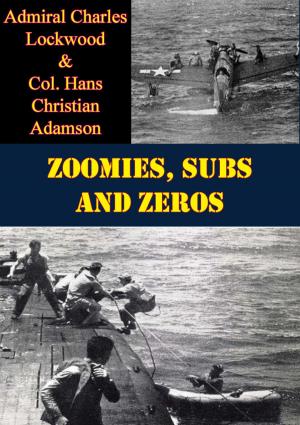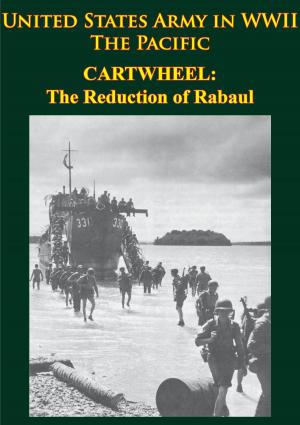At Close Quarters; PT Boats In The United States Navy [Illustrated Edition]
Nonfiction, History, Germany, European General, Military, United States| Author: | Captain Robert J. Bulkley Jr. | ISBN: | 9781786252067 |
| Publisher: | Verdun Press | Publication: | November 6, 2015 |
| Imprint: | Verdun Press | Language: | English |
| Author: | Captain Robert J. Bulkley Jr. |
| ISBN: | 9781786252067 |
| Publisher: | Verdun Press |
| Publication: | November 6, 2015 |
| Imprint: | Verdun Press |
| Language: | English |
Includes over 110 illustrations charting the history of the US Navy PT Boats.
“The destiny of our country has been inextricably interwoven with the sea. This was never more true than in the giant World War II that involved all seas and most of mankind. To fight the sea war we needed many types of ships, large and small, from aircraft carriers and battleships to PT boats.
“Small though they were, the PT boats played a key role. Like most naval ships, they could carry out numerous tasks with dispatch and versatility. In narrow waters or in-fighting close to land they could deliver a powerful punch with torpedo or gun. On occasion they could lay mines or drop depth charges. They could speed through reefs and shark infested waters to rescue downed pilots or secretly close the shore to make contacts with coast watchers and guerrilla forces. PT boats were an embodiment of John Paul Jones’ words:
“I wish to have no connection with any ship that does not sail fast for I intend to go in harm’s way.”
“Naval strength must function from shore to shore and on inland waters where the mobility and flexibility provided by ships can be employed to support land operations. PT boats filled an important need in World War II in shallow waters, complementing the achievements of greater ships in greater seas. This need for small, fast, versatile, strongly armed vessels does not wane. In fact it may increase in these troubled times when operations requiring just these capabilities are the most likely of those which may confront us.
“The thorough and competent account herein of over-all PT boat operations in World War II, compiled by Captain Robert Bulkley, a distinguished PT boat commander, should therefore prove of wide interest. The widest use of the sea, integrated fully into our national strength, is as important to America in the age of nuclear power and space travel as in those stirring days of the birth of the Republic.”–President John F Kennedy.
Includes over 110 illustrations charting the history of the US Navy PT Boats.
“The destiny of our country has been inextricably interwoven with the sea. This was never more true than in the giant World War II that involved all seas and most of mankind. To fight the sea war we needed many types of ships, large and small, from aircraft carriers and battleships to PT boats.
“Small though they were, the PT boats played a key role. Like most naval ships, they could carry out numerous tasks with dispatch and versatility. In narrow waters or in-fighting close to land they could deliver a powerful punch with torpedo or gun. On occasion they could lay mines or drop depth charges. They could speed through reefs and shark infested waters to rescue downed pilots or secretly close the shore to make contacts with coast watchers and guerrilla forces. PT boats were an embodiment of John Paul Jones’ words:
“I wish to have no connection with any ship that does not sail fast for I intend to go in harm’s way.”
“Naval strength must function from shore to shore and on inland waters where the mobility and flexibility provided by ships can be employed to support land operations. PT boats filled an important need in World War II in shallow waters, complementing the achievements of greater ships in greater seas. This need for small, fast, versatile, strongly armed vessels does not wane. In fact it may increase in these troubled times when operations requiring just these capabilities are the most likely of those which may confront us.
“The thorough and competent account herein of over-all PT boat operations in World War II, compiled by Captain Robert Bulkley, a distinguished PT boat commander, should therefore prove of wide interest. The widest use of the sea, integrated fully into our national strength, is as important to America in the age of nuclear power and space travel as in those stirring days of the birth of the Republic.”–President John F Kennedy.
![Cover of the book At Close Quarters; PT Boats In The United States Navy [Illustrated Edition] by Captain Robert J. Bulkley Jr., Verdun Press](https://www.kuoky.com/images/2015/november/500x500/9781786252067-v2lq_500x.jpg)




![Cover of the book THE ADMIRALTIES - Operations Of The 1st Cavalry Division 29 February - 18 May 1944 [Illustrated Edition] by Captain Robert J. Bulkley Jr.](https://www.kuoky.com/images/2014/august/300x300/9781782894568-Lip5_300x.jpg)


![Cover of the book The Desert Campaigns [Illustrated Edition] by Captain Robert J. Bulkley Jr.](https://www.kuoky.com/images/2014/august/300x300/9781782895466-UZXb_300x.jpg)



![Cover of the book Battle For The Solomons [Illustrated Edition] by Captain Robert J. Bulkley Jr.](https://www.kuoky.com/images/2015/november/300x300/9781786251848-l00S_300x.jpg)


![Cover of the book Stalingrad To Berlin - The German Defeat In The East [Illustrated Edition] by Captain Robert J. Bulkley Jr.](https://www.kuoky.com/images/2014/august/300x300/9781782893202-n4Nr_300x.jpg)